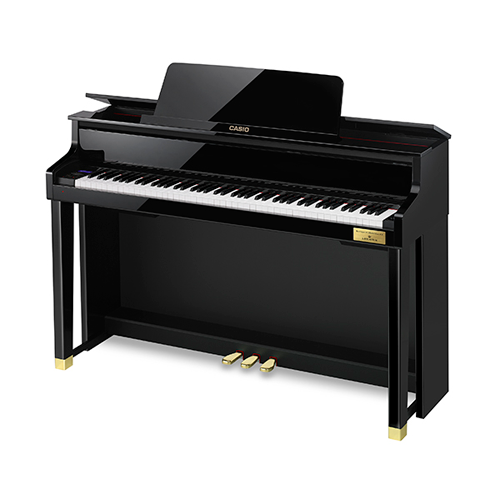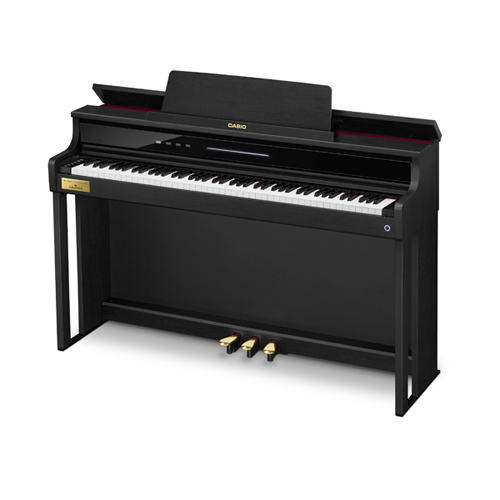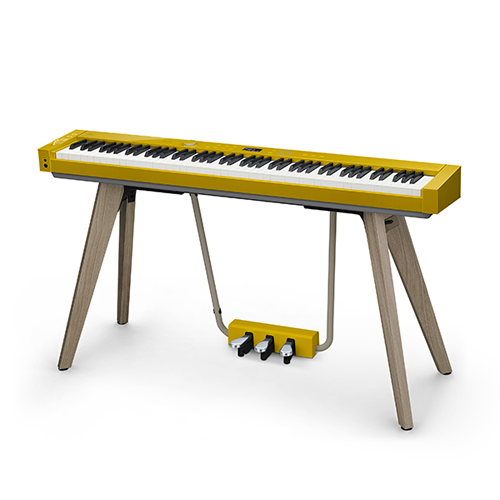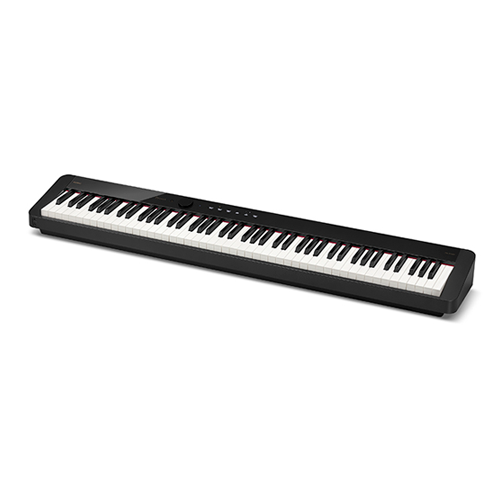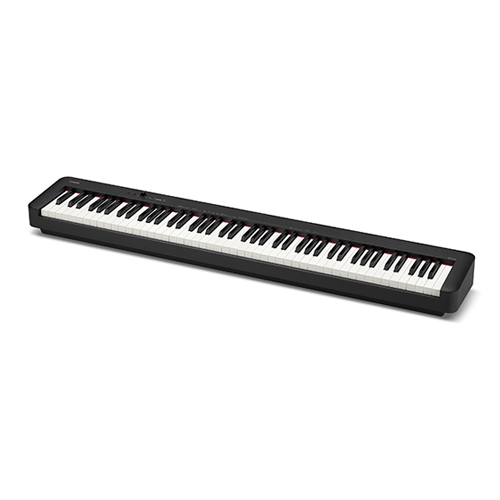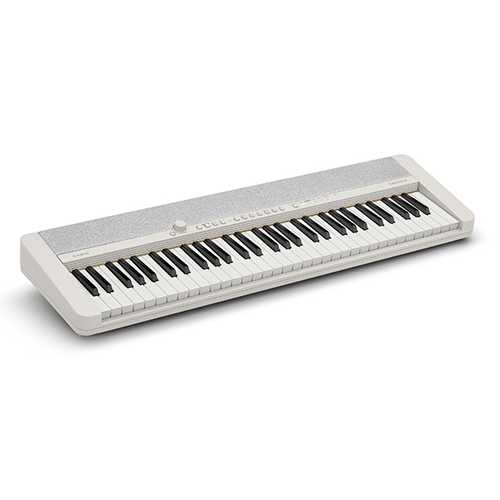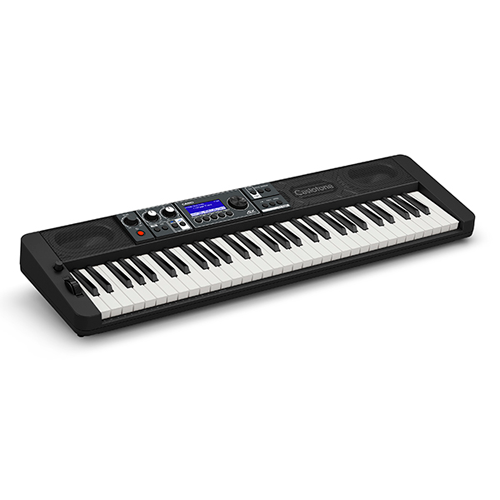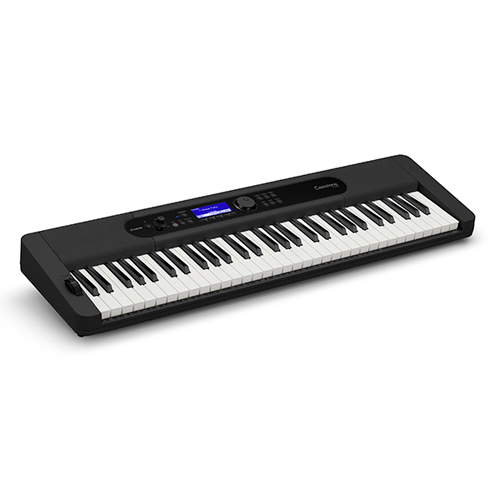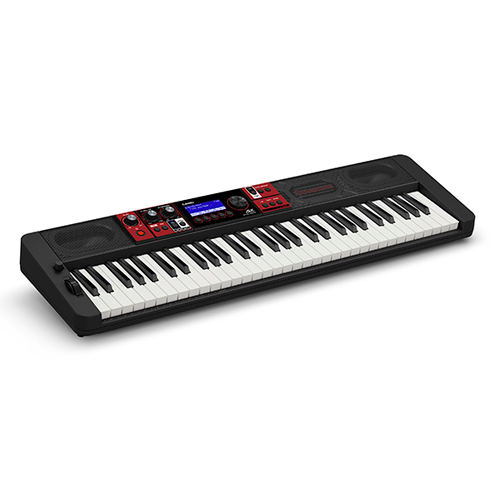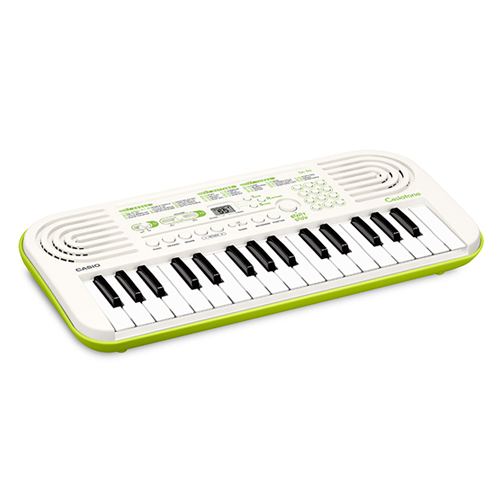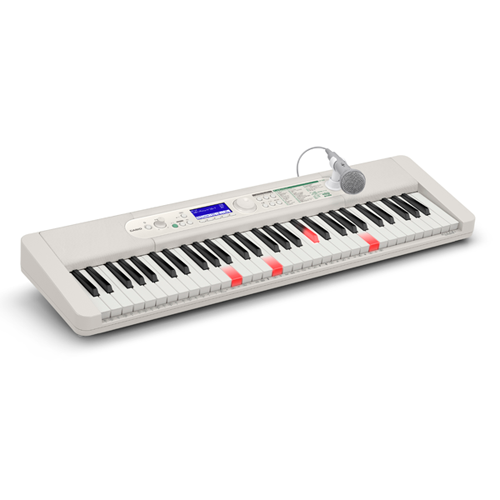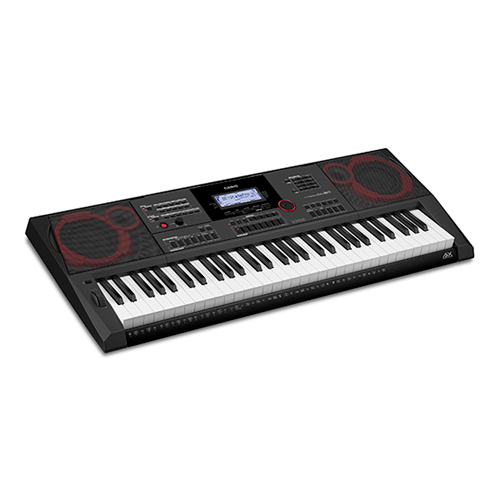

Left - Marie Hashimoto
Project Management Department, Development Promotion Unit, Engineering Headquarters
Right - Asami Ogasawara
Strategic Planning Section, Musical Instrument Marketing Department
Right rear - Mariko Kyo
Design Unit, Communication Design Department

Privia, is a trailblazer in the realm of "lifestyle pianos," and has embarked on a quest to produce a fresh perspective that transcends the boundaries of traditional norms. This challenge encompasses perspectives not only within the music realm but also across many diverse fields, embarking on a journey that even business minded individuals can easily grasp. Three key figures have joined us in a conversation about the intricate path that Privia traversed: Marie Hashimoto (Product Development), Mariko Kyo (Brand Design), and Asami Ogasawara (Marketing). They all played pivotal roles in shaping Privia's identity, with a particular focus on the flagship model, the PX-S7000, and shared with us their insights into the approach to curating Privia as being more than just a piano—but being a key lifestyle component. Get ready for a glimpse into the captivating stories behind the creation of Privia's flagship model.
──How did "Privia" come into existence?

Marie Hashimoto: Privia first emerged two decades ago under the concept of a "private piano," designed to enable each customer to freely interact with music. The enduring concept of a stylish design seamlessly blending with a diverse variety of lifestyles has been present since its inception. This design emphasis extends beyond the fundamental elements of its properties as an "instrument," encompassing the sound quality and key touch, that helps to elevate the overall playing experience.
──The Privia series includes a range of models. So what sets apart models like the PX-S1100, crafted for casual enjoyment, from the flagship PX-S7000?

Marie: The PX-S1100 is a compact tabletop model, enabling you to savor authentic experience of playing the piano in the comfort of your room or chosen space. With its sleek design, glossy top panel UI, and a variety of color choices, it effortlessly complements any interior space. On the other hand, the flagship PX-S7000 takes more of a center stage role thanks to its integrated stand and pedals. Notably, it liberates the piano from the typical constraint of needing to be placed against a wall, introducing a groundbreaking design that allows you to enjoy playing the piano in a place that suits your own lifestyle.

──Was the concept of an "integrated stand and pedal" established from the early stages of development?
Marie: Definitely, but initially, we also explored designs that included not just the four legs but also concepts that vastly differed from the final product. Normally, at CASIO, the product development team defines the structure of the instrument first, before passing it on to the design team. However, for the PX-S7000, we had to advance both product development and design concurrently. Therefore, it took multiple iterations and considerable experimentation before we arrived at the final, four legged design.
──Why was it necessary to undergo such trial and error?

Marie: We aimed to break away from the design of conventional upright pianos, which often assume it will be placed against a wall. We had a strong desire to craft a piano that doesn't rely on being propped against a wall to harmonize with room interiors. Consequently, we needed to come up with a design that looked stylish from every angle, could fulfill a diverse range of functional requirements, and avoids any preconceptions about needing to be placed up against a wall.
──So, it wasn't simply a matter of attaching a stand and pedals to the existing Privia models?
Marie: Far from it—that would have been impossible (laughs). Pianos exert force that pushes forward when keys are pressed, and the force generated when stepping on the pedals can impact the performance. Any instability could interfere with the playing experience. It took a lot of effort to achieve a balance between stability and a design that is visually appealing.
──The striking and uniquely appealing "Harmonious Mustard" color scheme is one of the standout features of the PX-S7000. Adjusting this color tone took several months, correct?

Mariko: Absolutely. The product design team meticulously researched various interior design shops, examining different pieces of furniture to develop this elusive and refined color. This period of adjustment underwent numerous iterations. Initially, there were prototypes featuring colors like blue and green, however, in order to achieve our vision of a color that elevates the visual appeal of both the piano and the interior environment, seamlessly aligning with people's lifestyles, we ultimately settled on "Harmonious Mustard."
──It's intriguing that the PX-S7000 takes inspiration from interior design shops instead of music stores. How did you address the tonal aspects of the instrument?
Marie: It was crucial that we ensured that the sound emanating from the speakers on the rear of the cabinet sounded excellent from every angle. Since the PX-S7000 deviated from the conventional practice of situating the piano against a wall, we aimed for consistent sound quality, whether it's placed in the center of the living room, played while sitting on the sofa, or listened to in the dining area. Our design approach, which deeply delved into the resonance and spatial spread of sound, is closer to the development of audio equipment rather than traditional instruments.
──What about the subtleties of the keystrokes and the thought process behind the design of the keyboard itself? Considering the slim and stylish design, was it challenging to shorten the keys?
Marie: It was indeed quite challenging (laughs). We delved into the nuances of keystrokes, taking inspiration from the grand piano and focusing on factors like weight, elasticity, and how quickly sound is produced. The appearance of the keyboard itself also received careful consideration. We utilized spruce wood, the same material found in authentic acoustic pianos, ensuring that the wood grain is visible from the side. In terms of the keys' surface, the finish has been adjusted one by one in an octave to closely recreate the nuance of ivory. By carefully considering these minute details in terms of both the aesthetics and functionality, our hope is that players sense, "This is more than just simple design."
──After going through numerous stages of trial and error, how soon until the PX-S7000, was released?

Asami Ogasawara: It actually took quite some time. As you may have gathered from the narrative, the PX-S7000 represents an entirely new way of thinking compared to traditional pianos. Consequently, the visual presentation also required a departure from conventional methods. While our typical approach involves honing the visual presentation with our primary focus on its role as an instrument, for Privia, given our emphasis on it being "In Harmony with Life," we aimed to authentically portray the theme of "lifestyle with a piano."
──How did you go about conveying that?

Mariko: The focus was on illustrating how the piano can harmonize with a variety of lifestyles—not in the sense of being "inconspicuous" or "non-intrusive," but rather in the sense that "its presence enhances the space and improves the quality of life." To intuitively communicate this charm, especially for the PX-S7000, we had in-depth discussions, particularly with Asami.
Asami: We delved deep into defining what constitutes a high-quality lifestyle, which is what Privia strives to achieve. What "comfort" means and what kind of situation it refers to. We, along with the team responsible for creating the product, spent a lot of time deeply investigating what these words meant in terms of design and how that should be expressed visually.
Mariko: At the Brand Design department, we always create "concept art" when developing new products. By clearly expressing details such as how it interacts with light, the texture of the blanket, and other minute features, we can ensure that everyone within the company shares a common view of the theme, concept, and target audience. Having "concept art" that accurately conveys this thought process is crucial to communicate the aim of the product and the experiences one can have with it.

Asami: We affectionately call it the "Privia Bible" within the company (laughs). In reality, it was a challenge to express the theme and concept of the PX-S7000. In order to accurately convey this , we conducted a photo shoot over several days. We needed to express how it fits into the room effectively while also communicating the allure of the instrument itself. There was a lot of intense discussions until the final moments during the shoot.
──How do you communicate the appeal of the PX-S7000 to users?
Asami: At the Marketing department we are responsible for a number of areas related to branding and marketing, from planning and promotion, to sales strategies and implementation of PR. Firstly, we invited musicians we had built global relationships with as well as same newcomers for this project try out the piano for themselves. They evaluated some of the fundamental and essential aspects of the instrument, such as the sound quality, nuances of the keystroke, and functionality, from each of their individual perspectives.
At the same time, because we were developing a completely new model of Privia, with the aim of creating a piano that harmonizes with people’s lifestyle, we formed partnerships with companies that have similar aspirations, such as Ligne Roset, VOGUE JAPAN, and Seki Furniture. Collaborating with and promoting these partnerships helped us convey the appeal of the product to customers. All of the musical artists and companies that cooperated with us on this project, approached it with passion, and the positive responses from users were incredibly gratifying for all of us involved.

──As we've discussed, it's clear that each of you shares a genuine love for the "Privia series." What fuels this passion, and could you share with us what you think makes CASIO so unique as a manufacturer?
Asami: Personally, I've been playing the piano since childhood, so I feel if have a good grasp on both the joy and challenges that come with it. Either way, I believe that having an instrument in one's life is inherently an enriching experience. I aspire to make playing piano more accessible to everyone, so even more people have the opportunity to improve their lives with music. I cherish being able to work in an environment with like-minded individuals who share the same passion for bringing Privia to as many people as possible.
Mariko: As a company, CASIO places the utmost importance on "enjoying" music. While I personally don't play a keyboard instrument, I empathize with CASIO's approach of working to lower the barrier of entry for musical instruments, bringing the joy of music to as many people as possible, rather than solely focusing on rigorous practice. In my role as part of brand design, my aim is to make customers understand the appeal of CASIO and appreciate its distinctive approach.
Marie: CASIO doesn’t produce acoustic pianos, therefore all of their effort is put into developing "digital pianos." Models like the PX-S7000 embody a feeling of creative freedom, breaking away from the traditional image of playing a piano placed against a wall. This flexibility appeals not only to classical enthusiasts but also to those who love jazz and rock. We strive to continue crafting instruments that can seamlessly integrate with each person's playing style.
Here we have pulled back the veil on the journey and some of the secrets behind Privia's evolution into a lifestyle piano. Above all, the remarkable empathy and passion of these individuals has helped to give birth to, and shape this brand, creating an entirely new set of values and culture.

